The movement along a curved path is called circular motion. You often come across circular motion in ice skaters, blades of the fan, amusement park rides, and more. The planets also move in circular paths. The terms rotation and revolution are closely associated with the movement of celestial bodies. However, the two movements are different from one another. The following article explains the key differences between rotation and revolution, the benefits of each, and their significance.
What is Rotation?
The circular movement of an object around a centre is called rotation. The Earth and other planets rotate around an imaginary line called the rotation axis. Since this axis passes through the Earth’s centre, the Earth is said to spin or rotate upon itself.
Rotation can easily be understood with the example of a spinning top. It moves in circles at the same point without changing its position.
Rotation of the Earth
The Earth’s spin around its axis is called rotation. The axis has an angle of 23½ degrees from the normal. The Earth is tilted on its axis, which causes the northern and southern hemispheres to lean towards and away from the Sun as per the rotation.
So, when the northern hemisphere is towards the Sun, the southern hemisphere is away from the Sun. This difference divides the Earth into a lit-up half and a dark half, giving rise to night and day.
Also, it must be understood that the direction of the Earth’s rotation depends entirely on the direction of viewing. So, when the Earth is viewed down from the North Pole, it is seen to spin counterclockwise. Contrastingly, when looked down from the south pole, it spins in the clockwise direction.
Benefits of Earth Rotation
Following are some of the key benefits of the rotation of Earth:
- The Earth’s rotation creates the diurnal cycle. It leads to lightness and darkness as well as temperature and humidity fluctuations.
- It causes tides in the seas and oceans.


| How does Earth’s rotation cause tides?The seas on the Earth experience high tides and low tides. The Moon’s gravitational pull creates the tidal force.
Tides are mainly caused by the gravitational interactions of the water with other celestial bodies. The Moon and the Sun are the two most influential bodies for tides on Earth. When the Earth rotates around its axis, different water bodies are at different locations with respect to the Moon and the Sun. Consequently, the side of the Earth that faces the Moon experiences the highest tide, while the water bodies away from the Sun or Moon experience low tides. It must be noted the Sun is significantly larger than the Moon. So, its gravitational force is also larger than that of the Moon. However, the Moon’s closeness to the Earth and the large distance of the Sun from Earth cause the Moon to have the maximum influence on tides. |
What is Revolution?
The term revolution is often used as a synonym for rotation but not when it concerns astronomy.
In astronomy and its related subjects, revolution is the movement around an object in a particular path.
The Earth’s rotation around Sun is called revolution. The Earth’s orbit around the Sun is elliptical, i.e., it follows an elliptical path to move around the Sun. The term revolution is also used to describe the movement of all other planets around the Sun.
Furthermore, moons also revolve around planets. Earth has a moon revolving around it, while planets like Jupiter and Saturn have several moons revolving around them.
Revolution of the Earth
The Earth’s movement around the Sun in a fixed path is called revolution. The Earth revolves from west to east. It has an anticlockwise direction. The Earth takes 365¼ days to complete its one revolution around the Sun. The revolution of speed of the Earth around the Sun is 30 km/s.
Benefits of Earth’s Revolution
The primary benefit of the Earth’s revolution is the change of seasons. As stated earlier, the Earth’s axis is not vertical. Rather it is tilted by 23.5 degrees. Consequently, the north end of the rotational axis always points toward the North Star when the Earth revolves around the Sun.
The tilt combined with the revolution around the Sun causes seasonal changes. Throughout the year, various parts of the Earth receive a varying amount of sunshine. While some get the Sun’s most direct rays, others don’t. When the North Pole is toward the Sun, the northern hemisphere has summer and the southern hemisphere experiences winter. On the contrary, when the South Pole is toward the Sun, the conditions reverse. The following image explains the change of seasons under the influence of Earth’s revolution.

Some Interesting Facts About Earth and Its Revolution
- The radius of the Earth is 6370 kilometres, i.e., about 3980 miles.
- The radius of the Sun is about 100 times greater than the radius of the Earth.
- One orbit of the Earth around the Sun comprises a complete year.
- The Earth’s orbit or its path of revolution around the Sun is slightly elliptical in shape.
- The ellipse has the Sun at one of the foci. An orbit of the Earth defines a plane with the Sun.
- The average distance between the Sun and the Earth is approximately 149 million kilometres, i.e., 93 million miles.
- The distance between the Sun and the Earth varies, ranging from about 147 million km to 152 million km. It can be written as 92 to 95 million miles and also as +/- 1.4% from the mean distance.
- Perihelion is when the Earth is closest to the Sun during January.
- Aphelion is when the Earth is farthest from the Sun during the month of July.
- The rotation of the Earth consists of an axis of rotation, the North Pole, the South Pole, and the equator of the planet.
- Interestingly, the Earth completes one rotation in more than one solar day. This rotation is because the Earth moves a little bit in its orbit and revolves around the Sun every day. As a result, for any particular area to face the Sun more directly again, the Earth must rotate slightly more than 360 degrees.
- The rotation of the Earth is once per day, i.e., 24 hours.
- A latitude forms a complete circle around the Earth. During the course of a day, a specific location on the Earth moves in a circle that coincides with its latitude circle.
- The local time of day is determined as per the Sun’s position in the sky. It is the same at all locations along a longitude line.
- At a particular time, the Sun illuminates only half of the Earth. This imaginary boundary between the lit and the unlit halves of the Earth is termed the circle of illumination. It is also called the terminator.
Revolution and Rotation of Planets
| Planets | Period of Rotation | Period of Revolution | Mean distance from the Sun in millions of kilometres |
| Mercury | 59 days | 88 days | 57.9 |
| Venus | 243 days | 224.7 days | 108.2 |
| Earth | 23 hr, 56 min, 4 sec | 365.2 days | 149.6 |
| Mars | 24 hr, 37 min | 687 days | 227.9 |
| Jupiter | 9 hr, 55 min, 30 sec | 11.86 years | 778.3 |
| Saturn | 10 hr, 40 min, 24 sec | 29.46 years | 1,427 |
| Uranus | 16.8 hours | 84 years | 2,870 |
| Neptune | 16 hr, 11 min | 165 years | 4,497 |
Difference Between Revolution and Rotation
The following table provides the main differences between rotation and revolution:
| Rotation | Revolution | |
| Definition | Movement of a body on its axis. It is the spinning action. | A complete round trip around a body. |
| Axis | Internal | External |
| Change in Position | No | Yes |
| With respect to Earth | The rotation of the Earth is the process of it spinning around its axis. | The movement of the Earth or other planets around the Sun. |
| Consequences | Earth’s rotation causes day and night. | Earth’s revolution causes seasons. |
| Time | The Earth takes 24 hours for a complete rotation around its axis. | The Earth takes 365 days for a complete revolution around the Sun. |
| Angle | Earth’s axis of rotation is tilted 23.5 degrees from normal. | The Earth’s path around the Sun is an elliptical orbit. |
Conclusion
The knowledge of Earth’s rotation and revolution is vital to understanding astronomy. While rotation refers to the spinning of an object around its own axis, moving around another object is revolution. The Earth performs both rotation and revolution. It takes 24 hours or one day to complete a rotation, but one complete revolution consumes 365 ¼ days.
Frequently Asked Questions
1. What angle does the axis of the Earth make with its orbital plane?
The Earth’s axis of rotation is the angle at which the Earth is inclined. The orbital plane is the imaginary line passing through its centre. The angle between the orbital plane and the axis of the Earth is 66½ degrees.
2. What is an equinox?
Equinox is a time when the Sun passes the celestial equator making the length of the day and nights equal. Each year has two equinoxes.
3. What is the direction of Earths rotation?
Its Earth’s rotation direction is west to east. It appears counterclockwise when seen from above the North Pole. All planets have west to east rotation except Venus and Uranus.
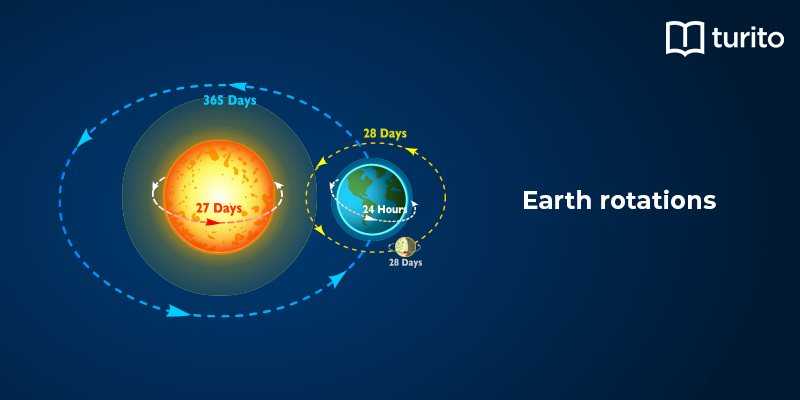
Relevant Articles
Understanding Thermal Energy: What It Is and How It Works
Thermal energy is essential to our daily lives, from warming …
Understanding Thermal Energy: What It Is and How It Works Read More »
Read More >>Avogadro’s Number: Meaning, Importance, and More
Introduction The concept of measuring the microscopic particles that make …
Avogadro’s Number: Meaning, Importance, and More Read More »
Read More >>Kinetic Friction – Definition, Laws, Types
Kinetic Friction Kinetic force is a force acting between two …
Kinetic Friction – Definition, Laws, Types Read More »
Read More >>







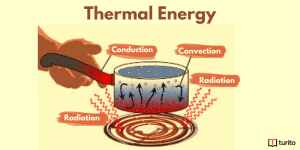
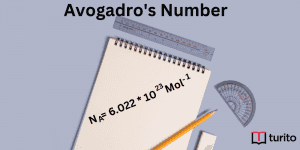
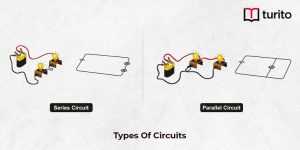
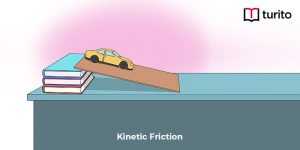









Comments: